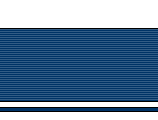Introductory
Rate ARM's
Most
adjustable rate loans (ARMs) have a low introductory rate or
start rate, some times as much as 5.0% below the current market
rate of a fixed loan. This start rate is usually good from 1
month to as long as 10 years. As a rule the lower the start
rate the shorter the time before the loan makes its first adjustment.
Index
- The index of an ARM is the financial instrument that
the loan is "tied" to, or adjusted to. The most common indices,
or, indexes are the 1-Year Treasury Security, LIBOR (London
Interbank Offered Rate), Prime, 6-Month Certificate of Deposit
(CD) and the 11th District Cost of Funds (COFI). Each of these
indices move up or down based on conditions of the financial
markets.
Margin
- The margin is one of the most important aspects of
ARMs because it is added to the index to determine the interest
rate that you pay. The margin added to the index is known as
the fully indexed rate. As an example if the current index value
is 5.50% and your loan has a margin of 2.5%, your fully indexed
rate is 8.00%. Margins on loans range from 1.75% to 3.5% depending
on the index and the amount financed in relation to the property
value.
Interim
Caps - All adjustable rate loans carry interim caps.
Many ARMs have interest rate caps of six-months or a year. There
are loans that have interest rate caps of three years. Interest
rate caps are beneficial in rising interest rate markets, but
can also keep your interest rate higher than the fully indexed
rate if rates are falling rapidly.
Payment
Caps - Some loans have payment caps instead of interest
rate caps. These loans reduce payment shock in a rising interest
rate market, but can also lead to deferred interest or "negative
amortization". These loans generally cap your annual payment
increases to 7.5% of the previous payment.
Lifetime
Caps - Almost all ARMs have a maximum interest rate
or lifetime interest rate cap. The lifetime cap varies from
company to company and loan to loan. Loans with low lifetime
caps usually have higher margins, and the reverse is also true.
Those loans that carry low margins often have higher lifetime
caps.





